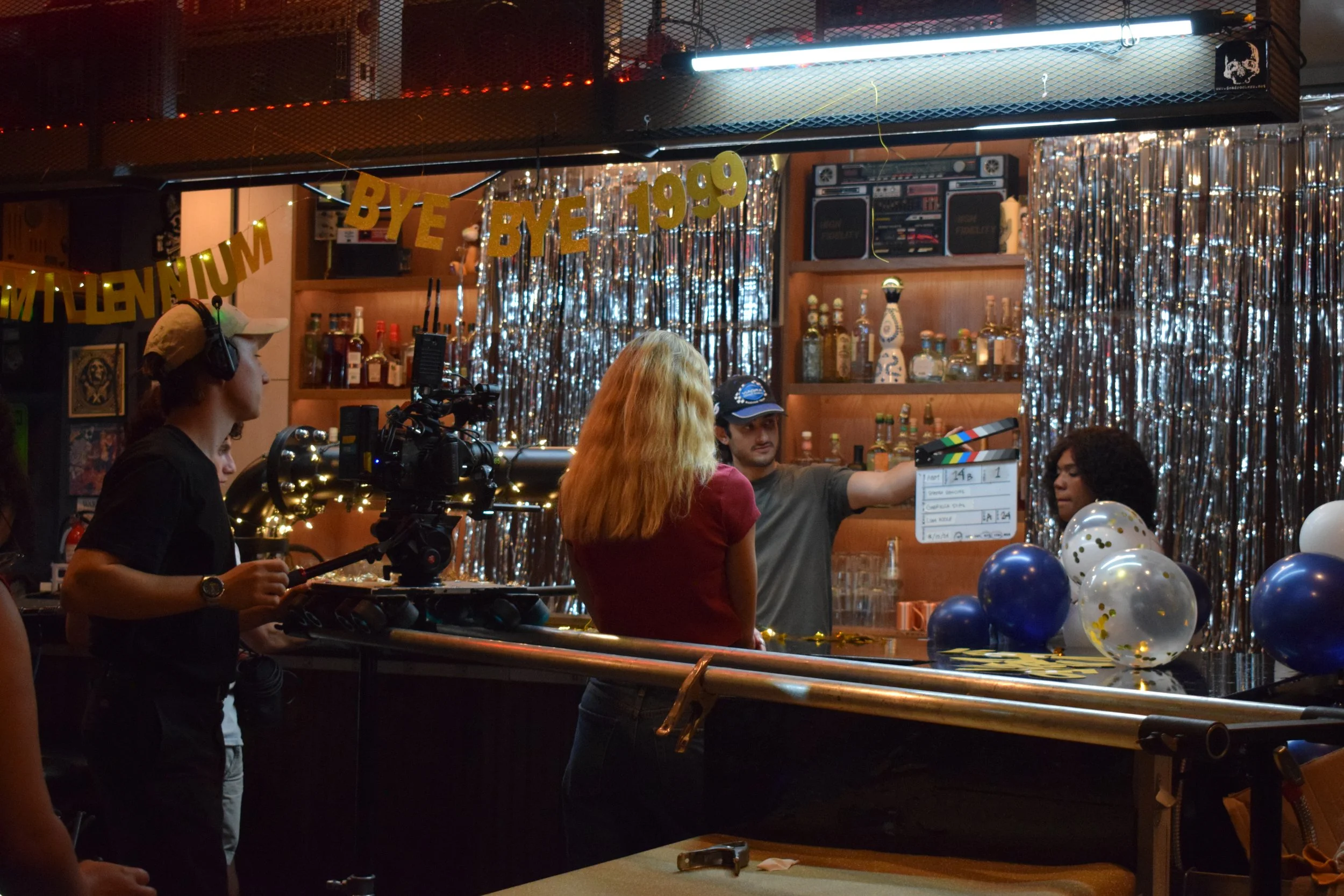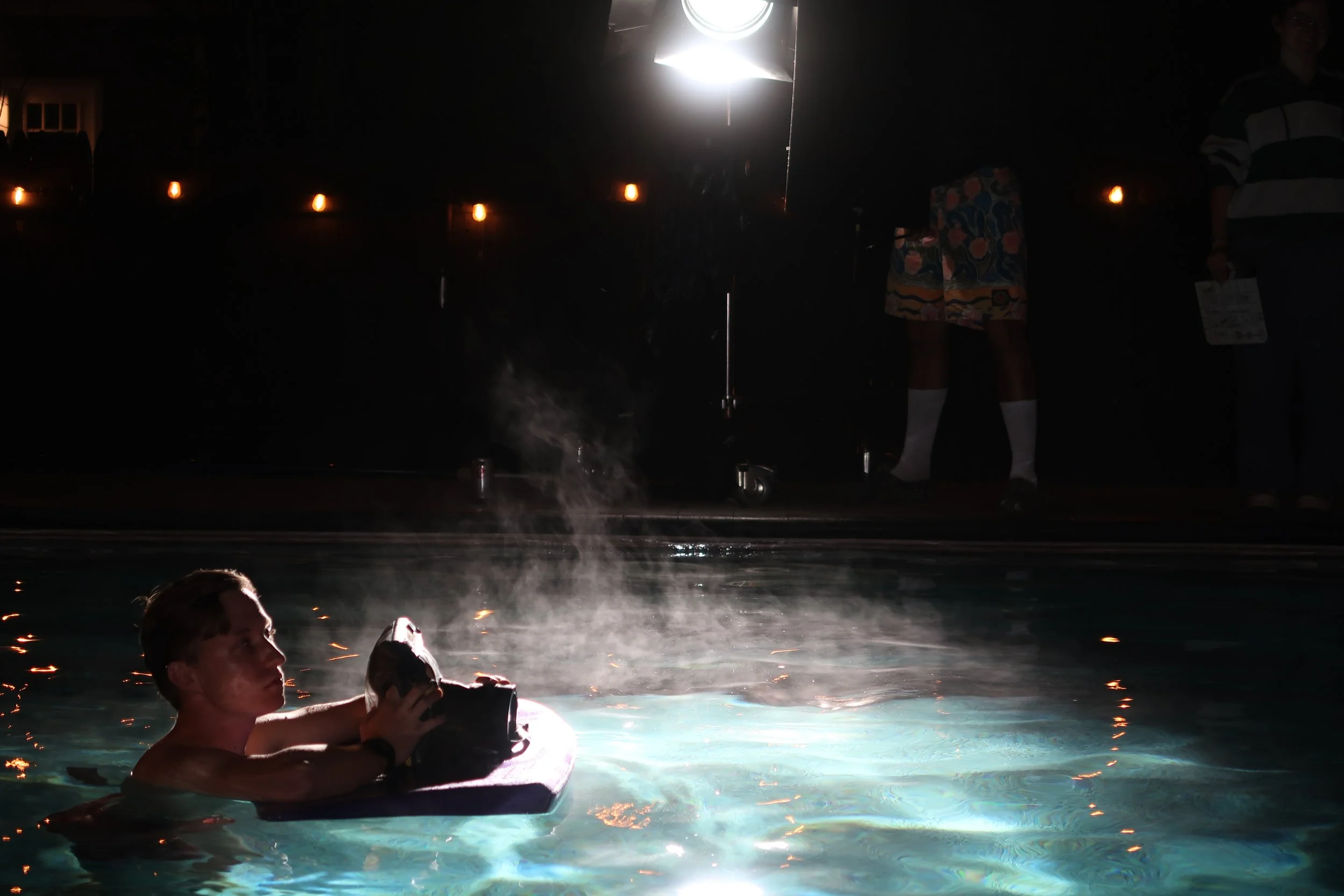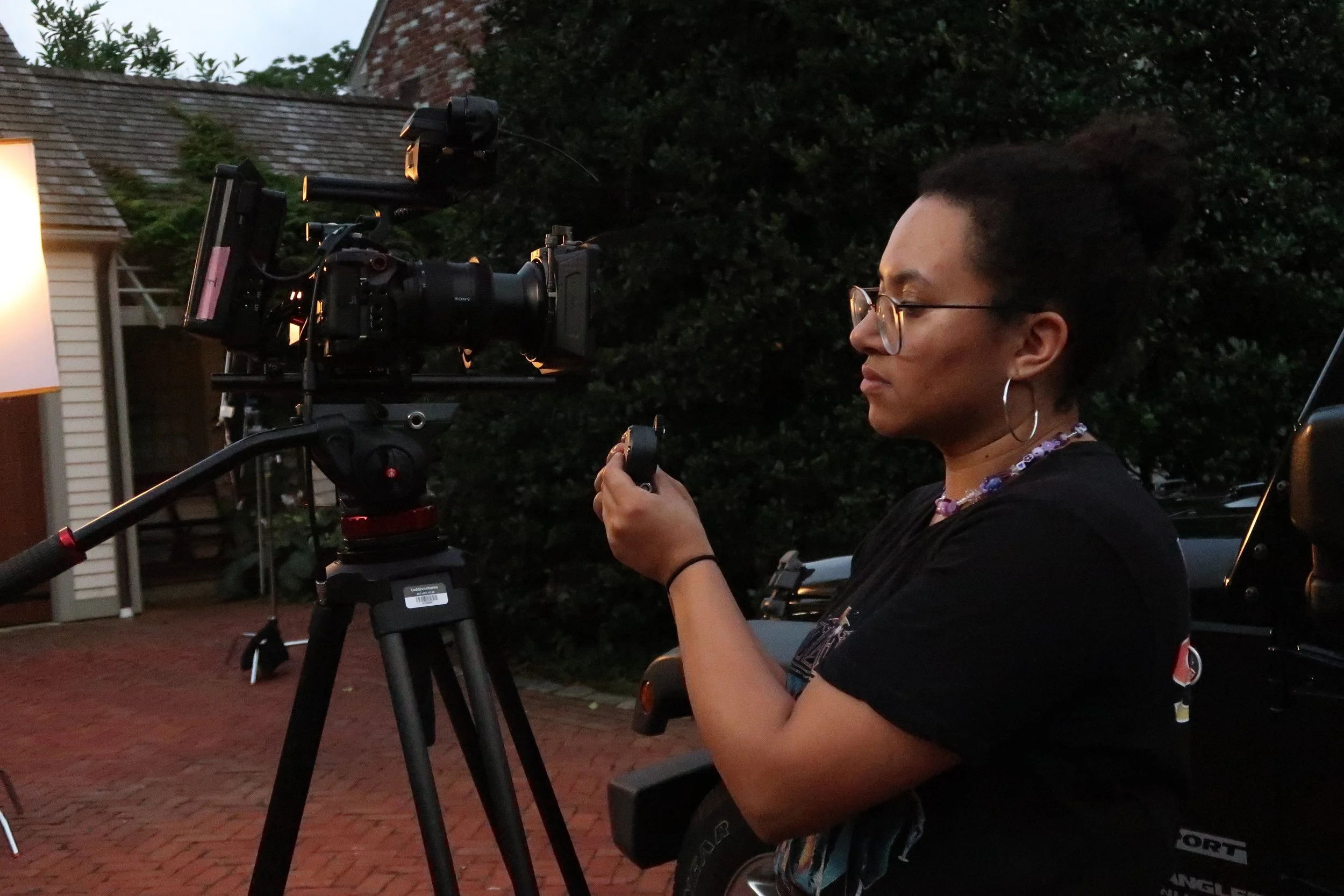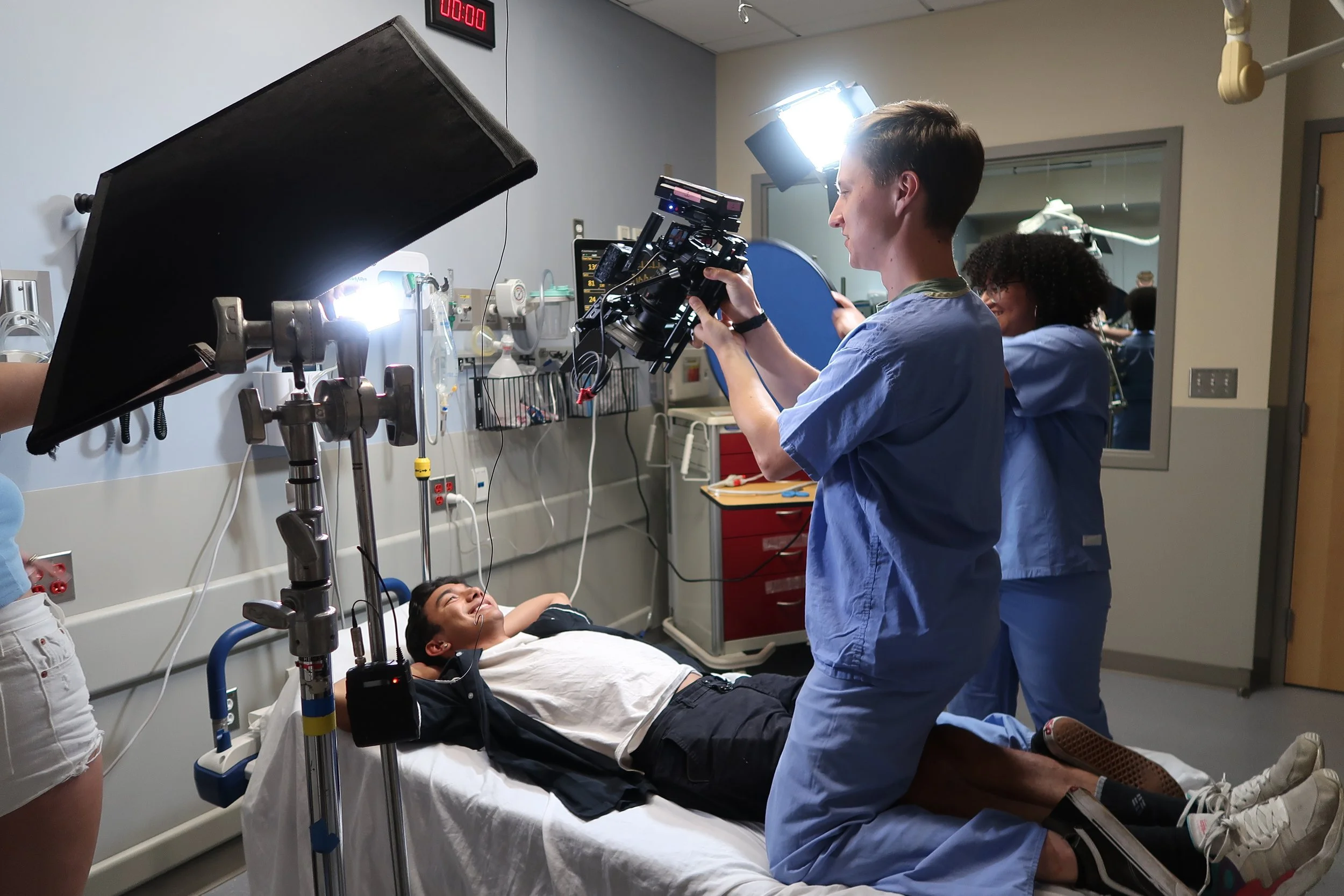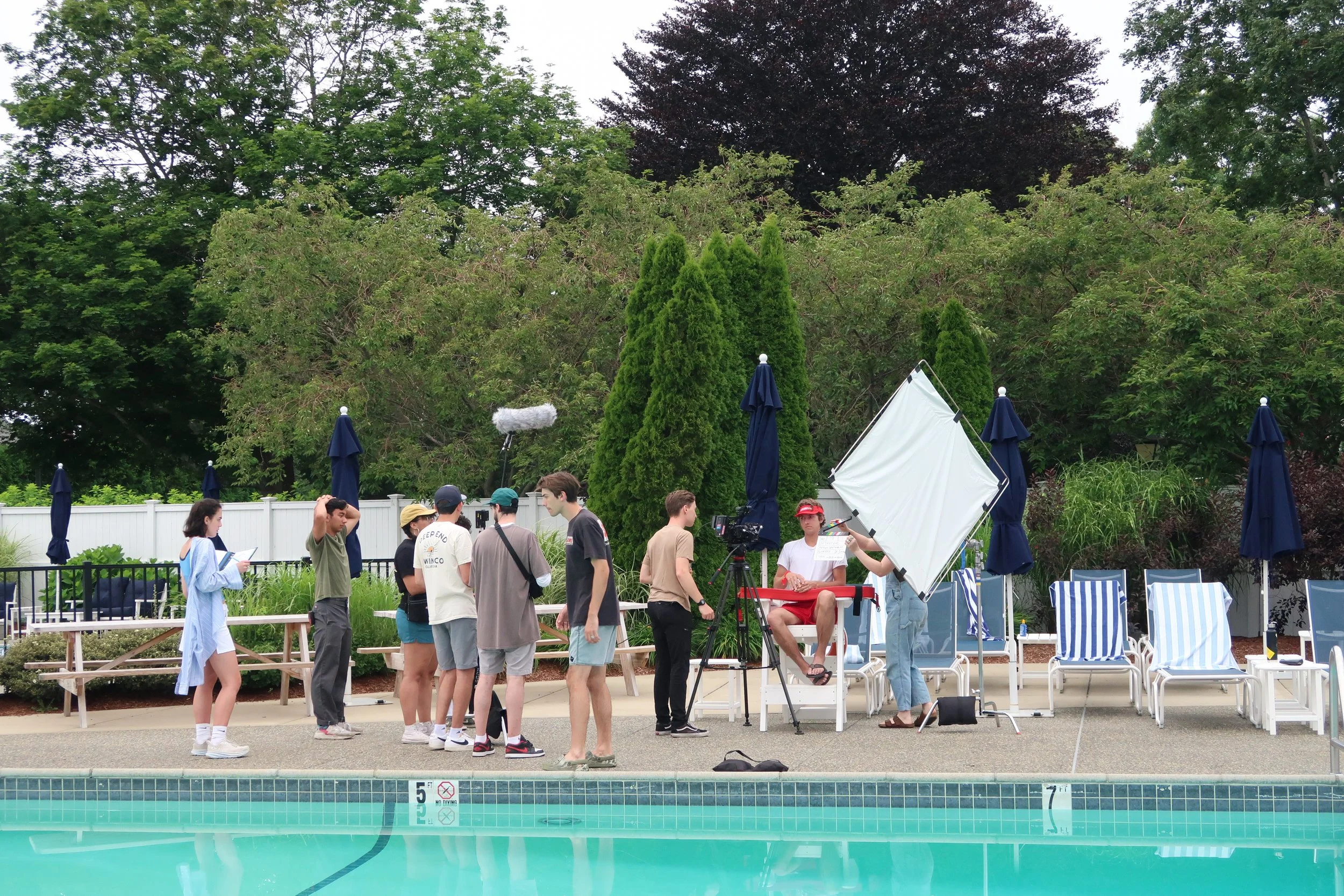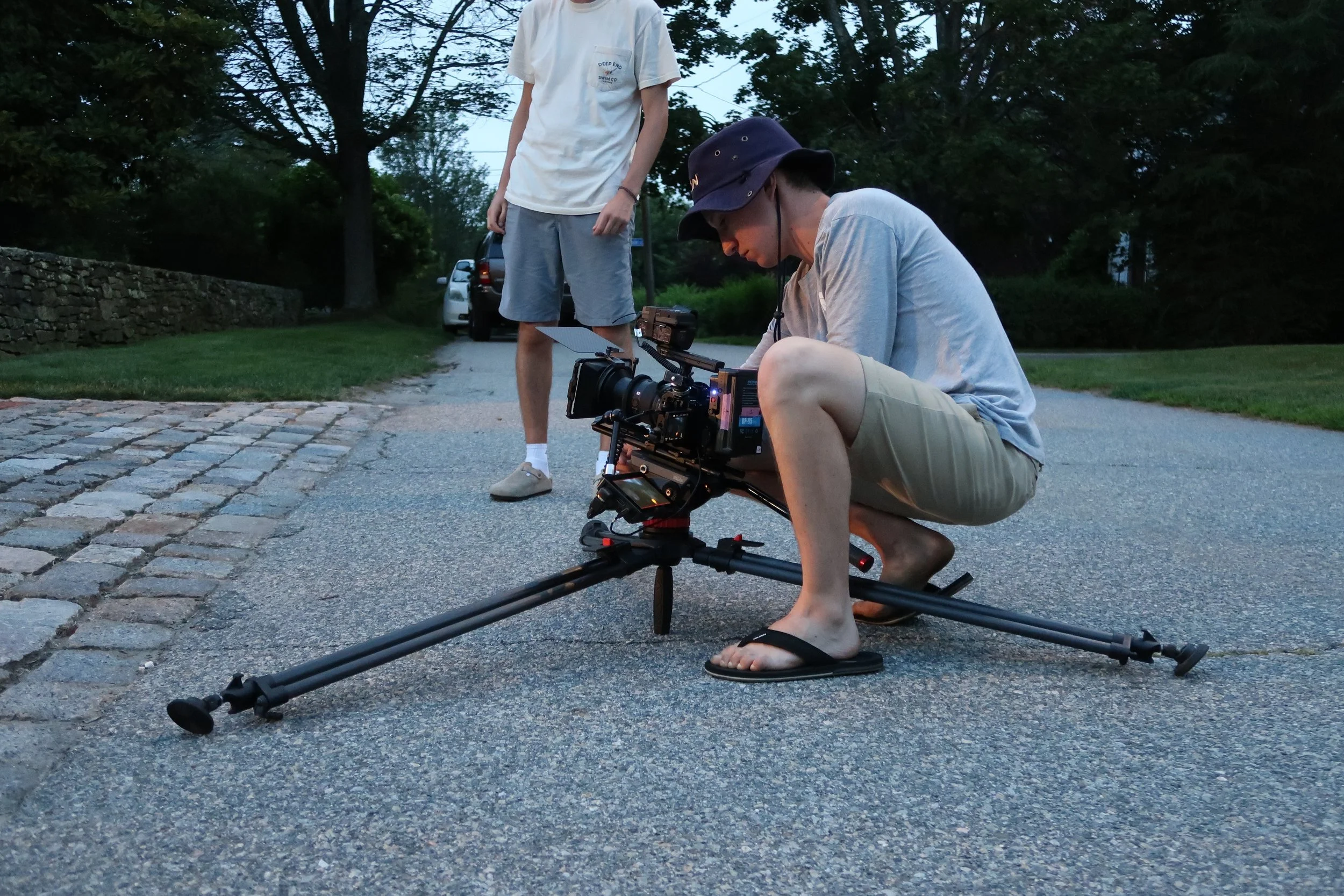Shadow Dancing (2024, music video)
This was by far the most challenging project I’d shot so far. It was the longest script I’d signed on to, took place across 4 decades, shot for 8 days, had VFX, and on and on. But it also meant I learned a lot…
Camera: I used the FX6 and Nisi Athena’s for this project, mostly because it was the most economical setup option in terms of budget that still got us an acceptable level of quality. When the director and I first spoke about differentiating the decades we really liked the idea of lensing them all individually in addition to distinct lighting and color palettes. Sadly the budget had other plans and we had to lean heavily on lighting as well as post processing the footage. What we ended up with was a fine setup but i’ll never be a huge fan of Sony colors.
Operating and Movement: Most of the film is on either sticks or the dana dolly with handheld reserved for the few dancing scenes. I’m happy with this decision since it gave those scenes some extra energy and annunciated the beats that extra 10%. I do think I got lazy with the tripod and dana dolly though, I think I could have added a little more movement hear and there. Lots of dialogue and general blocking takes place at this one spot at the bar which wasn’t something I flagged as much as I should have in preproduction. The result was pretty stagnant dialogue scenes which I wish I had the foresight to do something about. Either suggesting additional blocking to the director or just switching up the compositions entirely.
Lighting: Since the lensing technique wasn’t on the table it all came down to lighting the decades in a unique enough way so that there would be absolutely no confusion from the audience when there was a time jump. For the 1982’s this meant lots of purple, for 1989 lot of red, for 1999 lots of golds and oranges, and 2012 lots of subtle greens and overall lack of saturation. We also use the changing aspect ratios as visual signifiers. In post we went on to add increasing amount of film grain as you go back in time. Overall I’m pretty happy with how that part of it turned out. What I’m less happy with is the lighting on the singles at the bar. As a way of lighting the space it looks ok but I really should have taken the time to then relight their faces when the actors got into place. What made it worse is that the bar was top light which was pretty unflattering at times. Were I to do it again I would just bring in some negative fill and potentially a bounce to fill in the shadows under their eyes and nose. I’d probably intecify (and in some cases even just add) a stronger edge light too.
Becky (2024, music video)
What made this music video fun was the directors eagerness to lean into the early 2000’s-2010’s MTV aesthetic which gave us creative permission to lean into a certain look. It was also a pretty high energy song which meant lots of movement, poppy colors, and little regard for continuity.
Lighting: Trying to achieve that particular look with limited resources meant the entire exterior portion of the music video was lit with an 8x8 ultra bounce and silver reflector board. We had a 1200D for backlight in the shade but I wouldn’t say it played a huge role in any of our setups. This allowed us to get the over-lit look that you might attribute to music videos of that era without any actual lights. This placed a lot of emphasis on filming and scheduling around the position of the sun which, I suppose, is good practice anyway. As with any daylight-based project or scene the biggest takeaway was how quickly the sun moves from hour to hour.
Camera: Almost all the shots in the video came from my Blackmagic Pocket Cinema Camera 6k pro and my Sigma 18-35. As is the case with this camera is produces a beautiful image but leaves a lot to be desired in terms of ergonomics and bells and whistles. I pulled focus while operating during moments where (in the absence of a focus puller) autofocus would have saved some time. the camera definitely pulls its weight in dynamic range and color which, at the end of the day, is a priority.
Operating: This was also my first time using an Easy Rig vest. I found it extremely useful for the energetic montage shots and it gave me a level of control I wouldn’t have by going purley handheld, especially with the low angle hero shots. I’d love to try it with the Stabil attachment because, as it is, the Easy Rig doesn’t provide a ton of actual passive stabilization while moving around.
This shoot was a great example of why music videos can be a ton of fun. You get to lean into the gimmicks, disregard continuity, and stretch your resources further. It really made me want to shoot an exterior day narrative without any lights, just grip gear.
The Deep End (2023, short film)
This was the first short film I joined which was more than about 5 pages and had any sort of budget. It also had the added complexity of being shot in a different state than the crew was all based in which added a level logistical consideration I’d never had to contend with in the past. I was severely under qualified and learned a TON on this project. Perhaps more than any other to date.
Camera: Due to the number of shooting days and limited budget we filmed the whole thing on the writers FX3 and G-master zoom lens which in hindsight was the best tool for the job. The FX3 gave us a ton of low-light flexibility which was hugely important for almost every scene and the photography zoom cut down on setup times between shots which rocked given that the 1st AC and Gaffer was the same person... The lightweight rig was faster and allowed me to fit into smaller spaces (or in one case balance it on a boogie board in a pool). I was also able to throw it on a cheap gimbal the gaffer had laying around. it had its limitations, sure, but this was a character-based film which wouldn’t really have benefited much from fancy cinematics. At least not as much as coverage and performance continuity.
Lighting: Most scenes were lit with some combination of an MC-type eyelight, a 600D (which is where most of my budget went), my little 60d’s, household practicals, and sunlight/moonlight. This also sped us up but at the expense of precision contrast and dynamic dynamic range I could achieve in any given setup. This also meant that when there were no practicals to motivate our light, like in the nighttime beach scene, we really had to get creative. My biggest regret is not dialing in that specific setup.
Something I’m pretty happy with is the pool lighting which is just the 600D pointing straight down into the water. This gave us our key for most poolside scenes. we then backlit our actors with a warm glow which was usually motivated by the string lights littering the backyard. The bedroom scene was also fun as it’s only lit with household bulbs and lampshades with an MC as an eyelight for the singles. I imagine it helped the actors too who had their most intimate moment in that scene.
Underwater: For the water shots we realized all we could afford was a $100 plastic bag meant to “waterproof” cameras. For this reason we switched to the produces old GH4 as our crash cam which you see in the opening shot of our protagonist falling into the water. For the dialogue in the pool we risked the FX3 by putting it on a surfboard to keep it dry-ish while keeping the plastic bag on for good measure. I thought it worked out pretty well besides the fact that whenever the actors moved in the water the camera would bob up and down. The producers had also heated the pool to keep the actors warm which would quickly lead to the camera overheating and needing to be aired out between takes.
This was one of those projects that taught my 100 little things (the best kind of project) and a few really big things. Most of all: don’t f**k with night exteriors.







